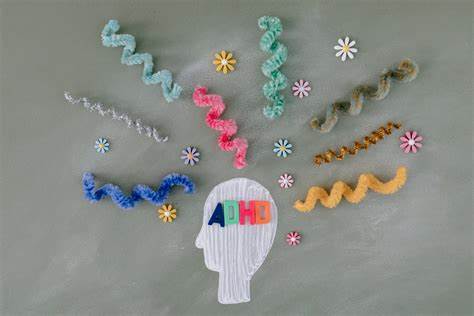April 6, 2024
U.S Latino Families: The challenges behind ADHD

Emilio, Ana, and Max are all Latino children who come from different Latin American cultural backgrounds. The children all have Attention Deficit and Hyperactivity Disorder, better known as ADHD, and are soon to start 5th grade. The three children will frequently encounter barriers in the treatment of their ADHD due to their culture. Barriers in treatment carry over into their learning and classroom success. Because of the individual nature of the challenges with ADHD, the students face different obstacles. Under the Americans with Disabilities act Students with ADHD are entitled to reasonable accommodations that would support their needs 1. Unfortunately what is frequently seen in Latino students with ADHD is a lack of support for those needs 2. Because of the students’ culture and ADHD, it is possible that they become numbers in the 32.2% percent of students with ADHD who drop out of high school and part of only the 15% with a college degree 3 4. The unfortunate statistics make it vital that individuals recognize the hardships that Latino students with ADHD face. Through the three children’s different situations we will see the implications of their socioeconomic status, cultural beliefs, and language barriers in ADHD treatment in the classroom.

For a student like Emilio, his family’s Socioeconomic status has a negative impact on his ADHD treatment. Latino households in the U.S make approximately $62,000 annually while the average household income in the U.S is around $75,000 5 In addition, close to 20% of Latinos in the U.S live at or below the poverty level while the general average poverty level is around 11% 6. Latinos’ lower socioeconomic status plays an important role in the life of a Latino child with ADHD. For Emilio, his lower socioeconomic household’s income means that it is less likely that he will have health insurance 7. Without health insurance Emilio is much less likely to receive an ADHD diagnosis 8. Without a medical diagnosis it becomes almost impossible for Emilio to obtain accommodations or an Individualized Education Plan in school. 9. An Individualized Education Plan, better known as an IEP, would entitle Emilio to receive accommodations such as extra time on tests or assignments, using technology for certain tasks, time set aside for breaks, and more 10. Accommodations or an IEP would be important for Emilio as they are necessary to support his learning needs, taking into account the ADHD challenges. 11. Even if Emilio can receive an accurate ADHD diagnosis, his family’s socioeconomic status will still play an important role in his learning experience with ADHD in a traditional school setting. Without health insurance, a student with ADHD will be unable receive treatment including support such as medication, therapy, out of school tutoring, and more. 12. Treatment for a student like Emilio is important outside of school because it makes him substantially more likely to succeed while in school 13. Without further treatment Emilio is put at even more of a disadvantage in handling his ADHD. Through Emilio it can be seen how the socioeconomic status of Latinos in the U.S can create an even more difficult environment for a Latino student with ADHD to succeed in the classroom.

Ana, another student with ADHD, faces cultural recognition problems regarding her diagnosis. Ana received an ADHD diagnosis yet her family struggles to understand what ADHD means. In Ana’s family there is a lack of acknowledgment of her ADHD. Ana’s parents believed that she has simply been having behavioral problems. Unfortunately, Anas circumstances are not uncommon for Latinos with an ADHD diagnosis 14. For some Latinos, ADHD might be viewed as an excuse for children’s poor behavior 15. ADHD is considered to be a hereditary developmental disability, meaning that one of Ana’s parents might have ADHD that was never diagnosed 16 . Ana’s parent with ADHD might see Ana as a reflection of themself but because they were able to push through hardships with little support it is expected that Ana will too. The expectations that Anas parents have of her likely perpetuate the invalidation of Anas diagnosis. If parents do not believe in the legitimacy of ADHD, it can be difficult for them to connect with teachers, medical professionals or other individuals that can help them manage their child’s learning program. 17. In an educational setting, it is vital that parents partner with educators to figure out solutions or a support system for their child. Adding to the lack of recognition, in Latino families there can be a common theme of keeping ADHD problems or behavioral problems in the family 18. If Ana’s parents follow this pattern, Ana’s ADHD treatment will lack support due to her parents’ hesitancy. In addition to hesitancy, for parents like Ana’s, there is a potential barrier between them and Anglo healthcare professionals. 19. The lack of comfortability can lead Latino parents to remain confused or unwilling to fully communicate with a healthcare system that Ana could benefit from. Ana’s parent’s uneasiness with home support perpetuates the problem of reliance solely on the school system. 20. If a Latino parent puts their full trust into Ana’s teachers and other help at school, Ana will still lack support in other aspects of her life. The lack of support outside of school and infrequency of treatment can make it harder for Ana, and children like her, to thrive while in school 21.
Max, another student with ADHD, struggles with a different problem than Ana and Emilio. Because Max’s family is predominantly Spanish speaking the language barrier gets in the way of many aspects of Max’s ADHD treatment. Max’s parents are not fluent in English, meaning that it is difficult for them to communicate with teachers that understand the provided information about Max’s ADHD 22. Max’s parents’ language barrier is not limited to teachers but also affects interactions with healthcare workers and other support systems that may benefit Max 23. The language barrier can prove difficult for Max’s parents to acquire adequate treatment for Max. His parents have a limited understanding of treatment that might be beneficial for their child. Like his parents, Max also faces problems with language barriers. Max’s lack of English proficiency affects his focus in school especially in a monolingual English classroom 24. Adding to Max’s struggles with ADHD are performance issues that might be falsely attributed to his language barrier. Max struggles to read and write and it is assumed that this is because of his low English language proficiency 25. What’s important to recognize is that bilingual students with ADHD are still likely to perform relatively poorly in their native language 26. What this means is that Max’s performance could be due to his ADHD rather than just his language barrier. Because of Max’s language barrier, teachers may approach his underperformance in a way that focuses on improving his English language proficiency rather than focusing on supporting his ADHD 27.

Emilio, Ana, and Max’s problems with ADHD combined with their culture can lead to them having a more difficult time in school than their peers or other students with ADHD. In the future this will lead to problems such as underperformance and negative self-esteem 28. Despite the problems being faced by these students there are organizations and approaches that aim to support children, Latinos included, with ADHD. Support organizations include CHADD, The National resource Center on ADHD, and even the CDC. What is most important to recognize about Emilio, Ana, and Max’s circumstances is that the problems they face are prevalent but not limited to Latinos. In other words, approaches that aim to support Latino children with ADHD are approaches that could work for everyone in a classroom.
- Gascon Ana, and Gomez India, “Is ADHD a Learning Disability?” GoodRx Health, (August 11, 2023). ↵
- Gascon Ana, and Gomez India, “Is ADHD a Learning Disability?” GoodRx Health, (August 11, 2023). ↵
- Kuriyan B Aparajita, “Young Adult Educational and Vocational Outcomes of Children Diagnosed with ADHD,” Journal of Abnormal Child Psychology, (January, 2013), 32. ↵
- Breslau Joshua, “Childhood and adolescent onset psychiatric disorders, substance use, and failure to graduate high school on time,” Journal of Psychiatric Research (March 2011) 297. ↵
- Guzman Gloria, and Kollar Melissa, “Income In the United States: 2022,” Current Population Reports, (September 2023), 3. ↵
- “US Census Bureau” Bureau of Labor Statistics (Spetember 2023). ↵
- Rostain Anthony, Yamolis Diaz, and Juan Pedraza, “Barriers to Care for Hispanic Adults with ADHD,” The Journal of Clinical Psychiatry 76, no. 1 (January 1, 2015), 47. ↵
- Rostain Anthony, Yamolis Diaz, and Juan Pedraza, “Barriers to Care for Hispanic Adults with ADHD,” The Journal of Clinical Psychiatry 76, no. 1 (January 1, 2015), 47. ↵
- Ellingstad Debora, Heumann Judith, Reynolds JoLeta, Ringer Larry, Richards Curtis, Ryder Ruth, Sheridan Suzanne, Warlick Kenneth, “A Guide to the Individualized Education Program,” Office of Secial Education and Rehabilitive Services U.S Department of Education (July 2000), 2. ↵
- Ellingstad Debora, Heumann Judith, Reynolds JoLeta, Ringer Larry, Richards Curtis, Ryder Ruth, Sheridan Suzanne, Warlick Kenneth, “A Guide to the Individualized Education Program,” Office of Special Education and Rehabilitive Services U.S Department of Education (July 2000), 2. ↵
- Ellingstad Debora, Heumann Judith, Reynolds JoLeta, Ringer Larry, Richards Curtis, Ryder Ruth, Sheridan Suzanne, Warlick Kenneth, “A Guide to the Individualized Education Program,” Office of Special Education and Rehabilitive Services U.S Department of Education (July 2000), 2. ↵
- Rostain Anthony, Yamolis Diaz, and Juan Pedraza, “Barriers to Care for Hispanic Adults with ADHD,” The Journal of Clinical Psychiatry 76, no. 1 (January 1, 2015), 47. ↵
- Jangmo Andreas, Stålhandske Amanda, Chang Zhend, Chen Qi, Almqvist Catarina, Feldman Inna, Bulik Cynthia, Lichtenstein Paul, D’Onofrio Brian, Kuja-Halkola Ralf, and Larsson Henrik, “Attention-Deficit/Hyperactivity Disorder, School Performance, and Effect of Medication,” J Am Acad Child Adolesc Psychiatry, (April 2019), 8. ↵
- Rostain Anthony, Yamolis Diaz, and Juan Pedraza, “Barriers to Care for Hispanic Adults with ADHD,” The Journal of Clinical Psychiatry 76, no. 1 (January 1, 2015), 46. ↵
- Locke Jill, Kang-Yi Christina, Pellecchia Melanie, Marcus Steven, Hadley Trevor, and Mandell David, “Ethnic Disparities in School-Based Behavioral Health Service Use for Children with Psychiatric Disorders” J Sch Health. (January 2017), 52 ↵
- Faraone Stephen and Larsson Henrik. (2018). “Genetics of attention deficit hyperactivity disorder,” Molecular Psychiatry, (February 2018) ↵
- Locke Jill, Kang-Yi Christina, Pellecchia Melanie, Marcus Steven, Hadley Trevor, and Mandell David, “Ethnic Disparities in School-Based Behavioral Health Service Use for Children with Psychiatric Disorders” J Sch Health. (January 2017), 52. ↵
- Locke Jill, Kang-Yi Christina, Pellecchia Melanie, Marcus Steven, Hadley Trevor, and Mandell David, “Ethnic Disparities in School-Based Behavioral Health Service Use for Children with Psychiatric Disorders” J Sch Health. (January 2017), 52. ↵
- Locke Jill, Kang-Yi Christina, Pellecchia Melanie, Marcus Steven, Hadley Trevor, and Mandell David, “Ethnic Disparities in School-Based Behavioral Health Service Use for Children With Psychiatric Disorders” J Sch Health. (January 2017), 52. ↵
- Locke Jill, Kang-Yi Christina, Pellecchia Melanie, Marcus Steven, Hadley Trevor, and Mandell David, “Ethnic Disparities in School-Based Behavioral Health Service Use for Children With Psychiatric Disorders” J Sch Health, (January 2017), 52. ↵
- Haack Lauren, Jocelyn Meza, Yuanyuan Jiang, Eva A. Araujo, and Linda Pfiffner, “Correction to: Influences to ADHD Problem Recognition: Mixed-Method Investigation and Recommendations to Reduce Disparities for Latino Youth.” Administration and Policy in Mental Health and Mental Health Services Research 45, no. 6 (November 1, 2018), 959. ↵
- Araujo Eva, Linda Pfiffner, and Lauren Haack, “Emotional, Social and Cultural Experiences of Latino Children with ADHD Symptoms and Their Families,” Journal of Child & Family Studies 26, no. 12 (December 1, 2017), 3513. ↵
- Rostain Anthony, Yamolis Diaz, and Juan Pedraza, “Barriers to Care for Hispanic Adults with ADHD,” The Journal of Clinical Psychiatry 76, no. 1 (January 1, 2015), 47. ↵
- Ivey Pauline, “Overcoming Language and Cultural Barriers in School: Helping Hispanic Students Acquire Success in Elementary School,” (May 1, 2011.), 29. ↵
- Burr Elizabeth, Haas Eric, and Karen Ferriere, “Identifying and supporting English learner students with learning disabilities: Key issues in the literature and state practice” Institute of Education Sciences, (July 2015) 3. ↵
- Curtis Sharma, Katsos Napoleon, and Gibson Jenny, “Associations between Bilingualism and Attention-Deficit Hyperactivity Disorder (ADHD)-Related Behavior in a Community Sample of Primary School Children,” Applied Psycholinguistics, (2022), 721. ↵
- Burr Elizabeth, Haas Eric, and Karen Ferriere, “Identifying and supporting English learner students with learning disabilities: Key issues in the literature and state practice” Institute of Education Sciences, (July 2015) 7. ↵
- Kita Yosuke, Inoue Yuki, “The Direct/Indirect Association of ADHD/ODD Symptoms with Self-esteem, Self-perception, and Depression in Early Adolescents,” Front Psychiatry, (July 2017), 2. ↵
Tags from the story
ADHD
ADHD in Children
bilingual education
Education
Nomination-Communication-Studies
Nomination-Social-Sciences
Recent Comments
Jonathan Flores
To begin, I think this article is very well written and I appreciate the approach taken to this complex problem. It is always difficult for any immigrant or Spanish-speaking person to be thrown into an environment where the language is unfamiliar to them. In addition, as you expertly depicted, these challenges can be exacerbated by unrecognized disorders. In this way, I think you did a great job at showing that we as a society have to make a conscious effort to make sure these issues are addressed, such that we can facilitate the growth of all people equally.
23/04/2024
10:19 am
lvaldez12
For starters, this article is written perfectly and i feel as though many people that will read this article that have a Latino background can relate and understand the article on a personal level. I myself can get understand the issue with ADHD within the Latino community since i have family that is diagnosed with it. I’ve found it very interesting that we are able to see and understand that when ADHD isn’t taken seriously it can’t deeply impact it only the child but family as well.
25/04/2024
10:19 am
Luis Ramirez
I have enjoyed reading this! I do agree with you on this. Many of my immigrant friends don’t have insurance and struggle to go to the doctors, even though they may be very sick. We’ve never really thought about how the U.S. has a lot of helpful resources, especially for U.S. citizens, and how the rest have to figure it out by themselves.
25/04/2024
10:19 am
Naya Harb
Hi Adelina! This topic is extremely interesting. As a person who’s first language is not English, I understand the struggles the difficulties. Thank you for raising awareness on this topic. I believe this is not talked about enough, the struggles that these individuals go through and some solutions on how to overcome them. Great article and congratulations on your nomination!
26/04/2024
10:19 am

Paola Then Ortiz
Hello Adelina! I enjoyed reading this article. I am from the Dominican Republic, and I still do not know anyone who was diagnosed with ADHD. This article shows how sometimes Spanish-speaking families struggle to give the treatment needed for their kids, this is it not only shown via their economic status but also cultural barriers like you showed us. Thank you for sharing this article with us, it was very informative!
18/04/2024
10:19 am